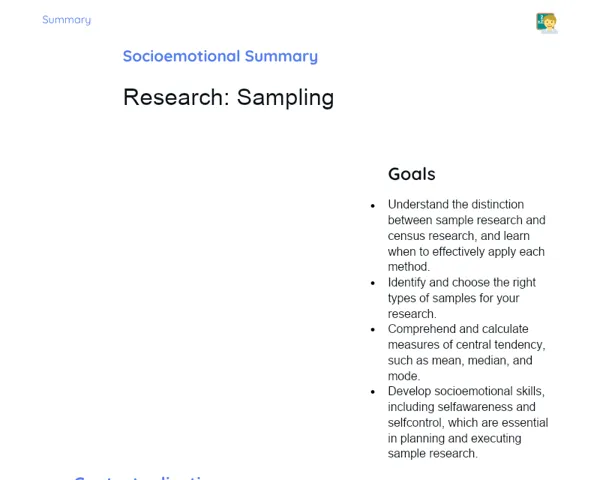Summary Tradisional | Right and Non-Right Angles
Contextualization
Angles form a crucial part of geometry, a branch of mathematics that delves into various shapes and figures. We encounter angles in our daily lives frequently, whether it's at the corners of a notebook, the edges of tables, or even with the hands of a wall clock. Grasping the concept of angles is vital for activities such as drawing, construction, and tackling measurement-related problems. In this lesson, we will concentrate on right angles and non-right angles, focusing on how to recognize and distinguish them in different geometric figures.
Right angles precisely measure 90 degrees and are commonly found in many structures around us, like the corners of squares and rectangles. Non-right angles can be further categorized into acute angles, which measure less than 90 degrees, and obtuse angles, which are greater than 90 degrees. Being able to identify these angles in flat figures is a critical skill, not only in mathematics but also across various practical applications like construction and design.
To Remember!
Right Angles
Right angles are those measuring exactly 90 degrees. They are prevalent in our surroundings, for instance, at the corners of a paper, table edges, and in geometric shapes like squares and rectangles. The defining feature of a right angle is that it creates a perfect 'L' shape, indicating that its sides are perpendicular to one another.
To spot a right angle, simply check if it measures 90 degrees. A simple way to verify this is by using a square or folding a piece of paper to create a right-angled corner. In shapes like squares and rectangles, all internal angles are right angles, making them straightforward to identify.
Understanding right angles is key for constructing stable structures. For instance, in building projects, ensuring that angles are right plays a vital role in the stability of buildings and bridges. Furthermore, right angles are essential in design and art, helping to achieve balanced and harmonious proportions.
-
A right angle measures exactly 90 degrees.
-
Formed by perpendicular sides.
-
Present in squares and rectangles.
Acute Angles
Acute angles are those that measure less than 90 degrees. Being smaller than right angles, they can be spotted in various geometric figures, including triangles and stars. A distinctive feature of acute angles is that they appear more 'tight' compared to right or obtuse angles.
To identify an acute angle, check if it is less than 90 degrees. You can do this using a protractor or by assessing how 'tight' the angle looks. In shapes like equilateral and isosceles triangles, acute angles are commonly found, as all angles in these triangles are less than 90 degrees.
Acute angles find importance in various practical fields. In engineering and architecture, they are utilized to craft structures requiring additional support or that adhere to specific design strategies. In the realm of art, acute angles can inject energy and movement into compositions.
-
An acute angle measures less than 90 degrees.
-
Common in equilateral and isosceles triangles.
-
Appears more 'tight' compared to a right angle.
Obtuse Angles
Obtuse angles are those measuring more than 90 degrees but less than 180 degrees. They exceed right angles in measurement, hence appear more 'broad'. Obtuse angles can be seen in geometric figures such as obtuse triangles and pentagons.
To identify an obtuse angle, check if it exceeds 90 degrees. You can use a protractor for this or observe how 'broad' the angle looks. In figures like obtuse triangles, at least one angle will be obtuse.
In practice, obtuse angles have applications across numerous fields. In architecture, they are used to formulate creative designs and structures that require specific angles for both stability and aesthetic appeal. In graphic design, obtuse angles can contribute to intriguing visual effects and balanced presentations.
-
An obtuse angle measures more than 90 degrees.
-
Common in obtuse triangles and pentagons.
-
Appears more 'broad' than a right angle.
Identifying Angles in Plane Figures
Recognizing right and non-right angles in flat figures is a fundamental skill in geometry. This entails closely observing the figure and determining the measurement of each angle. Plane figures, which include squares, triangles, pentagons, and hexagons, exhibit diverse types and quantities of angles that must be accurately identified.
Using tools like protractors and squares aids in angle identification within plane figures. In the case of more intricate shapes like pentagons and hexagons, it's necessary to evaluate each angle carefully. For instance, a regular pentagon contains five internal angles, all less than 180 degrees, while a regular hexagon has six internal angles, also under 180 degrees.
Accurately identifying angles in plane figures is vital for tackling geometric problems and applying that knowledge in fields like construction and design. This competency also fosters logical reasoning and spatial visualization skills among students.
-
Use protractors and squares for identifying angles.
-
Examine each angle separately in complex shapes.
-
Enhance logical reasoning and spatial visualization.
Key Terms
-
Right angle: an angle that measures exactly 90 degrees.
-
Acute angle: an angle that measures less than 90 degrees.
-
Obtuse angle: an angle that measures more than 90 degrees.
-
Plane figures: two-dimensional shapes like squares, triangles, pentagons, and hexagons.
-
Protractor: a tool to measure angles.
-
Square: a tool to draw and verify right angles.
Important Conclusions
In this lesson, we delved into the concepts of right and non-right angles, learning how to identify and differentiate these in various geometrical configurations. We highlighted that right angles measure exactly 90 degrees and are commonly seen in squares and rectangles, whereas acute and obtuse angles, measuring less than and more than 90 degrees respectively, can be found in triangles and other complex shapes.
Grasping the varied types of angles is crucial not just for solving mathematical equations but also for leveraging this knowledge in practical scenarios, like construction, design, and art. Mastering the identification and measurement of angles plays a role in creating stable and aesthetically pleasing structures.
Throughout the lesson, practical examples and guided exercises were employed to reinforce our understanding of these concepts. The ability to identify angles in flat figures is indispensable for developing logical reasoning and spatial visualization—skills that are essential for ongoing learning in geometry and various branches of mathematics.
Study Tips
-
Review right, acute, and obtuse angles using simple shapes like squares, triangles, and pentagons.
-
Practice identifying and measuring angles with tools like protractors and squares to build confidence.
-
Explore daily scenarios where angles are prevalent, such as in construction or organizing spaces, to apply learned concepts practically.



